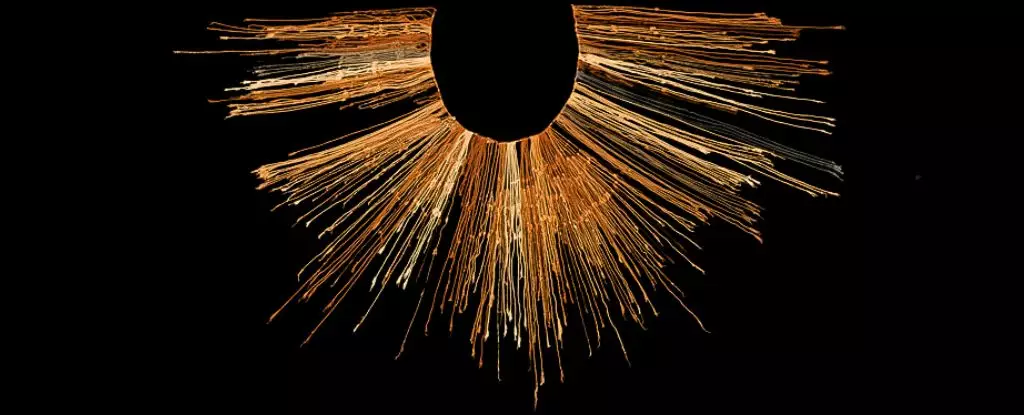For over a thousand years, the Andean civilizations, particularly the Inca Empire, utilized a sophisticated tool known as the khipu (or quipu) to document and relay information. These devices consist of intricate networks of cords and knots, serving as a system of record-keeping and communication devoid of written language. The unique construction of khipus allowed for the representation of numerical data through various configurations of knots, colors, and string types. The khipu’s importance to the Inca Empire—thriving from approximately 1438 CE until the mid-16th century—is indispensable, especially in the absence of written documentation.
The creation of khipus was an art form, requiring specialized skills from artisans known as khipukamayuqs. These craftsmen made intentional choices regarding materials, including cotton and llama or alpaca fibers, often enhancing their work with natural dyes or intricate patterns. The nuances in their designs were not merely aesthetic; they held significance in the numeric and informational content they conveyed. The orientation of the yarn, the distribution of knots, and the specific configuration of cords combined to create a language that was both intricate and deeply informative. Even early Spanish observers recognized the khipu’s diverse applications—from recording agricultural inventories to tracking taxation systems and demographic information.
The late 20th century marked a pivotal era for khipu study, particularly due to the work of scholars like ethno-mathematician Marcia Ascher and anthropologist Robert Ascher. Their early research included cataloging various khipus found in northern Chile, some of which have recently gained notoriety due to their remarkable size and complexity. The largest known khipu stretches over five meters, boasting more than 1,800 cords, while another of significant complexity contains nearly 600 cords with elaborate arrangements.
The advent of digital technology enhanced this ongoing research, revolutionizing how data stored in khipus can be analyzed and cross-referenced. The creation of repositories like the Open Khipu Repository enables scholars to access digitized khipu data, facilitating a modern reevaluation of these ancient artifacts. The availability of digital tools also allows for the examination of patterns and possible interconnections between different khipus, a task that was far less feasible just a few decades ago.
In my recent research, I investigated the relationship between two notable khipus recorded by the Aschers, revealing fascinating numeric connections. Both khipus share a unique structural theme—central to their analysis is the use of red and white “divider” cords that segment groups of data into specific collections. The larger khipu organizes its information into ten groups of seven cords, whereas the smaller khipu divides its data into seven groups of ten cords, alongside several subsidiary ones.
This relationship suggests a complex interplay of data representation; both khipus archive the same underlying data but articulate it through differing formats. This study uncovers a novel numeric relationship, highlighting the potential of khipus to mirror and complement one another in their functions. However, despite these revelations, the precise nature of the data represented remains elusive. This uncertainty invites further inquiry: Why would the Andean peoples have found it necessary to encode the same information through two distinct khipus?
One plausible avenue of speculation revolves around the potential functions of the two khipus. Aspects such as food production, allocation, and distribution could have warranted separate recordings—one khipu might document agricultural output, while the other indicates the distribution of goods among community members or storehouses. The multifaceted approach to documenting information underscores the sophistication of Andean record-keeping and the critical role khipus played in the administration of resources and social organization.
Despite the survival of only approximately 1,600 khipus today, researchers believe that the majority of these artifacts have yet to be fully examined and understood. Many khipus are housed in collections scattered across the Americas and Europe, with fewer than half having undergone any digitization process. Ongoing digital initiatives aim to restore and preserve the knowledge contained within these artifacts, shedding light on ancient Andean societies and their intricate methods of data organization.
As modern technology continues to advance, the potential for new insights and revelations about the khipus is immense. By utilizing these tools, researchers can develop a deeper understanding of not only the khipus themselves but also the cultures and societies that created and utilized them. The journey to unlock the mysteries of the khipu is an ongoing endeavor—one that promises to enrich our appreciation of a remarkable civilization that thrived in the Andean mountains.


Leave a Reply